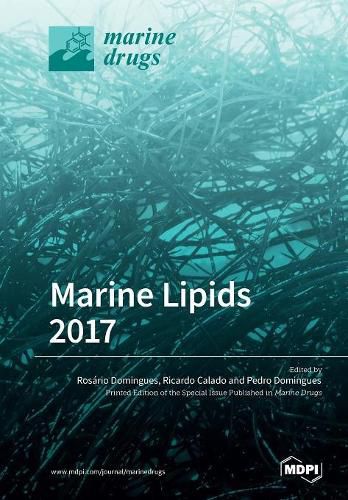Readings Newsletter
Become a Readings Member to make your shopping experience even easier.
Sign in or sign up for free!
You’re not far away from qualifying for FREE standard shipping within Australia
You’ve qualified for FREE standard shipping within Australia
The cart is loading…






This title is printed to order. This book may have been self-published. If so, we cannot guarantee the quality of the content. In the main most books will have gone through the editing process however some may not. We therefore suggest that you be aware of this before ordering this book. If in doubt check either the author or publisher’s details as we are unable to accept any returns unless they are faulty. Please contact us if you have any questions.
Marine organisms are a well-known source of lipids with high nutritional value, such as n-3 fatty acids (e.g., 20:5 and 22:6), but also possess bioactive properties (e.g., polar lipids as glycolipids and phospholipids). Polar lipids are considered high added value bioactive molecules with health promoting effects, and with potential applications in food, feed, and pharmaceutical industries. Although some polar lipids of marine organisms are known to have functional properties (e.g., anti-inflammatory, anti-proliferative, antioxidant and antimicrobial), the potential of these molecules is yet to be fully unravelled, as the lipidome of the majority of marine organisms remains largely unknown. Different marine organisms, even when closely related in the tree of life, display specific lipidome signatures, which are representative of the remarkable chemical biodiversity present in world oceans. Lipid composition can also change due to environmental and nutritional conditions. If one considers that each marine organism contains thousands of structurally and functionally diverse lipids, it is clear that the characterization of their lipidome is a challenging task. Nonetheless, in recent years, advanced analytical approaches coupling chromatography and mass spectrometry have emerged as powerful tools in lipidomic analysis. The resolution and high throughput analysis achieved with these analytical approaches has allowed researchers to identify and quantify the lipid species present on the cells and tissues of a diversity of marine organisms, opening new perspectives in the identification of lipid signatures for their valorisation and biotechnological applications.
$9.00 standard shipping within Australia
FREE standard shipping within Australia for orders over $100.00
Express & International shipping calculated at checkout
This title is printed to order. This book may have been self-published. If so, we cannot guarantee the quality of the content. In the main most books will have gone through the editing process however some may not. We therefore suggest that you be aware of this before ordering this book. If in doubt check either the author or publisher’s details as we are unable to accept any returns unless they are faulty. Please contact us if you have any questions.
Marine organisms are a well-known source of lipids with high nutritional value, such as n-3 fatty acids (e.g., 20:5 and 22:6), but also possess bioactive properties (e.g., polar lipids as glycolipids and phospholipids). Polar lipids are considered high added value bioactive molecules with health promoting effects, and with potential applications in food, feed, and pharmaceutical industries. Although some polar lipids of marine organisms are known to have functional properties (e.g., anti-inflammatory, anti-proliferative, antioxidant and antimicrobial), the potential of these molecules is yet to be fully unravelled, as the lipidome of the majority of marine organisms remains largely unknown. Different marine organisms, even when closely related in the tree of life, display specific lipidome signatures, which are representative of the remarkable chemical biodiversity present in world oceans. Lipid composition can also change due to environmental and nutritional conditions. If one considers that each marine organism contains thousands of structurally and functionally diverse lipids, it is clear that the characterization of their lipidome is a challenging task. Nonetheless, in recent years, advanced analytical approaches coupling chromatography and mass spectrometry have emerged as powerful tools in lipidomic analysis. The resolution and high throughput analysis achieved with these analytical approaches has allowed researchers to identify and quantify the lipid species present on the cells and tissues of a diversity of marine organisms, opening new perspectives in the identification of lipid signatures for their valorisation and biotechnological applications.